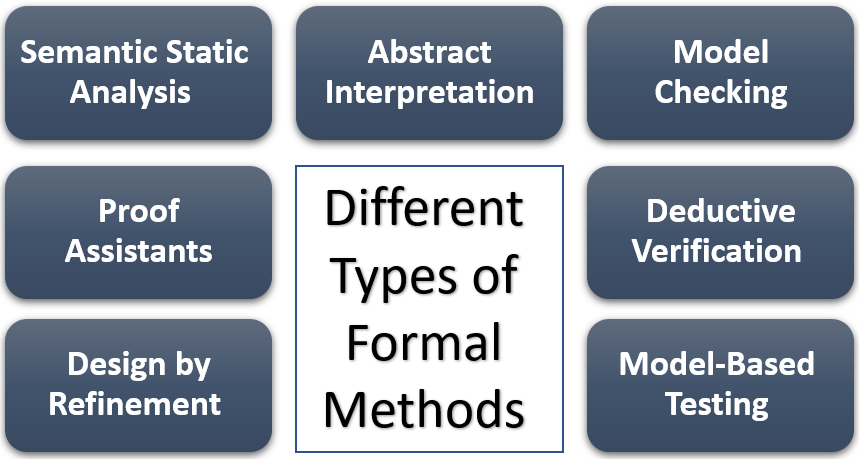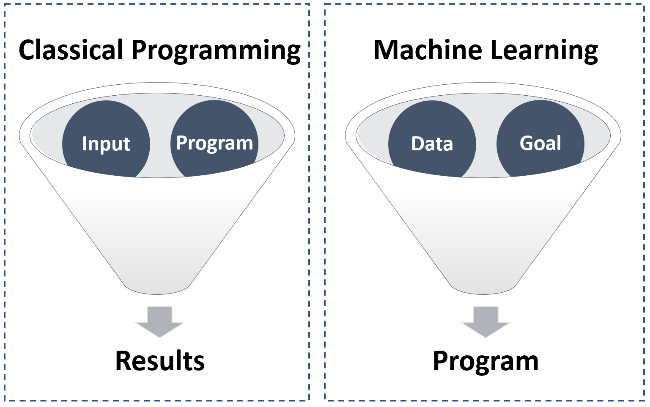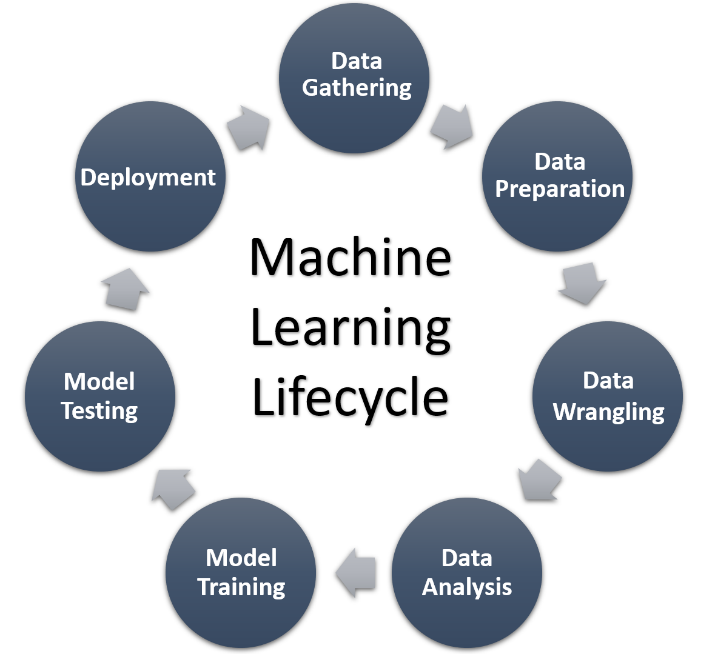The use of formal approaches in machine learning is becoming increasingly crucial as ML systems are utilized in more critical applications such as autonomous driving and medical diagnosis. Formal methods give a rigorous approach to evaluating the accuracy and reliability of ML systems, which is critical for ensuring their safety and efficacy. Formal approaches, which use mathematical models and logic-based reasoning, can assist discover and eliminate flaws and vulnerabilities in ML systems, lowering the risk of unintended effects and boosting overall performance. As a result, using formal approaches is vital for developing trustworthy ML systems that can be depended on in safety-sensitive applications.
- Formal Methods
- Machine Learning
- Opportunities
- Challenges
1. Introduction
Machine learning has emerged as a powerful tool for solving complex problems in various domains, such as image and speech recognition, natural language processing, and autonomous systems. However, as machine learning models become more complex and widespread, there is a growing need for ensuring their correctness, reliability, and safety. Formal methods, which are mathematical techniques for verifying and analyzing software and hardware systems, offer a promising approach for addressing these challenges. In this text, we will explore the use of formal methods for machine learning, including their benefits and open challenges.

2. What are Formal Methods?
Formal methods are a set of mathematical techniques for specifying, designing, verifying, and analyzing software and hardware systems. They provide a rigorous and systematic approach for ensuring that a system meets its requirements and behaves correctly under all possible scenarios. There are several types of formal methods, including:

- Abstract Interpretation: a method for over-approximating the behavior of a program to prove its correctness or detect errors.
- Semantic Static Analysis: a method for analyzing the meaning of program code to detect errors or enforce constraints.
- Model Checking: a method for exhaustively verifying the behavior of a system against a formal specification.
- Proof Assistants: a tool for interactively constructing and verifying mathematical proofs.
- Deductive Verification: a method for proving the correctness of a program using logical inference rules.
- Model-Based Testing: a method for generating test cases from a formal model of a system.
- Design by Refinement: a method for systematically refining a high-level specification into a correct implementation.
3. What is Machine Learning?
Machine learning is a subfield of artificial intelligence that focuses on developing algorithms that can learn from data and make predictions or decisions based on that learning. Unlike classical programming, where the programmer specifies the rules and logic for a program, in machine learning, the program learns from examples and data.

The machine learning lifecycle typically includes several stages, including:

- Data gathering: collecting and preprocessing data from various sources.
- Data preparation: cleaning, transforming, and organizing data for analysis.
- Data wrangling: combining, filtering, and transforming data to create a suitable dataset for training a model.
- Data analysis: applying statistical techniques and machine learning algorithms to the dataset to learn patterns and relationships.
- Model training: using the learned patterns and relationships to train a machine learning model.
- Model testing: evaluating the performance and accuracy of the trained model on a separate dataset.
- Deployment: deploying the model in a production environment to make predictions or decisions.
How formal methods can be used for machine learning.
Formal methods can be used in various stages of the machine learning lifecycle to ensure the correctness, reliability, and safety of machine learning models. For example:
- Formal verification: formal methods such as model checking and deductive verification can be used to verify the correctness of the machine learning model against a formal specification or requirements.
- Semantic analysis: formal methods such as semantic static analysis can be used to analyze the meaning of the machine learning model code and detect errors or enforce constraints.
- Testing: formal methods such as model-based testing can be used to generate test cases from a formal model of the machine learning model and ensure its correctness under different scenarios.
- Refinement: formal methods such as design by refinement can be used to systematically refine a high-level specification of the machine learning model into a correct implementation.
4. Advantages of Formal Methods for Machine Learning
The use of formal methods for machine learning offers several advantages, such as:
- Increased confidence in the correctness and reliability of machine learning models: Formal methods provide a rigorous and systematic approach for verifying machine learning models against formal specifications or requirements. This can increase the confidence in the correctness and reliability of machine learning models, especially in safety-critical or mission-critical applications.
- Improved safety and security of machine learning models in critical applications: Formal methods can help detect and prevent potential safety and security issues in machine learning models, such as bias, adversarial attacks, or unexpected behaviors. This is particularly important in critical applications, such as healthcare, finance, or transportation.
- Better understanding of the behavior and limitations of machine learning models: Formal methods can help analyze the behavior and limitations of machine learning models under different scenarios, such as different input data, different training data, or different assumptions. This can provide insights into the strengths and weaknesses of machine learning models and help improve their performance and robustness.
- More efficient and effective testing of machine learning models: Formal methods can help generate test cases automatically from formal models of machine learning models, which can save time and effort compared to manual testing. Moreover, formal methods can ensure that the generated test cases cover all possible scenarios and detect all potential errors, which can increase the effectiveness of testing.
5. Open Challenges of Formal Methods for Machine Learning
There are also several open challenges and limitations to the use of formal methods for machine learning, such as:
- The complexity and variability of machine learning models and datasets: Machine learning models and datasets can be highly complex and variable, which can make it difficult to specify and verify them using formal methods. Moreover, the lack of standardization and interoperability between different machine learning frameworks and tools can also hinder the application of formal methods.
- The need for domain-specific formalisms and techniques for different types of machine learning models: Different types of machine learning models, such as deep learning, reinforcement learning, or probabilistic models, may require different formalisms and techniques to be verified and analyzed. Moreover, the choice of formalism and technique may depend on the characteristics of the application domain and the requirements of the stakeholders.
- The trade-off between the scalability and expressiveness of formal methods: Formal methods can be either scalable or expressive, but not both. Scalable formal methods are designed to handle large and complex systems, but they may sacrifice some expressiveness and precision. Expressive formal methods, on the other hand, can capture fine-grained details of the system, but they may not scale well to large and complex systems. Finding the right trade-off between scalability and expressiveness is a key challenge in applying formal methods to machine learning.
- The lack of standardization and integration between formal methods and machine learning frameworks: There is currently a lack of standardization and integration between formal methods and machine learning frameworks, which can hinder the adoption and interoperability of formal methods in machine learning. Moreover, the lack of common terminology and notation between the formal methods and machine learning communities can also create barriers to communication and collaboration.
6. Future Work
Future work in the intersection of formal methods and machine learning can focus on several directions, including:
- Developing more scalable and expressive formal methods for machine learning: There is a need for formal methods that can handle the complexity and variability of machine learning models and datasets, while providing sufficient expressiveness and precision for verification and analysis.
- Integrating formal methods with machine learning frameworks: There is a need for standardized and interoperable interfaces between formal methods and machine learning frameworks, which can facilitate the integration and adoption of formal methods in machine learning.
- Applying formal methods to more complex and diverse machine learning models and applications: There is a need for formal methods that can handle a wide range of machine learning models and applications, including deep learning, reinforcement learning, and probabilistic models, and that can capture the domain-specific requirements and constraints of different application domains.
- Addressing ethical and societal issues in the use of formal methods for machine learning: There is a need for considering the ethical and societal implications of using formal methods for machine learning, such as the impact on privacy, fairness, and accountability, and for developing guidelines and best practices for ensuring the responsible and ethical use of formal methods in machine learning.
7. Conclusion
In conclusion, the use of formal methods for machine learning offers a promising approach for ensuring the correctness, reliability, and safety of machine learning models, especially in critical applications. Formal methods can provide a rigorous and systematic approach for verifying and analyzing machine learning models against formal specifications or requirements, as well as generating test cases and refining high-level specifications. However, there are also several open challenges and limitations to the use of formal methods for machine learning, such as the complexity and variability of machine learning models and datasets, the need for domain-specific formalisms and techniques, the trade-off between scalability and expressiveness, and the lack of standardization and integration. Future work in the intersection of formal methods and machine learning can focus on developing more scalable and expressive formal methods, integrating formal methods with machine learning frameworks, applying formal methods to more complex and diverse machine learning models and applications, and addressing ethical and societal issues. Overall, the use of formal methods for machine learning is a topic of active research and development, and holds great potential for improving the reliability and safety of machine learning models in various domains.
